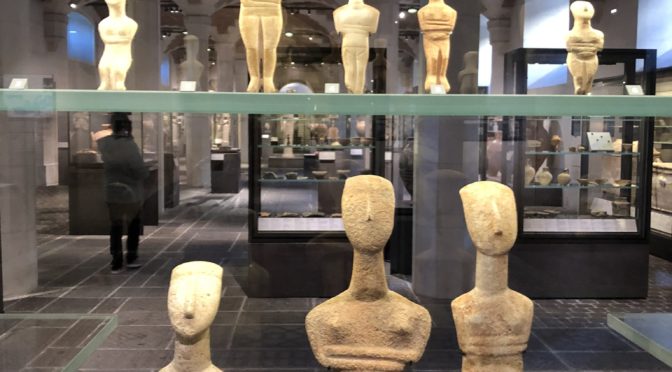Sculpture

Cycladic Art
Travel is educational. Often while traveling one tends to see something that sticks somewhere in the back of your mind, to later return and make you want to know more. One of these happenings in my life, was Cycladic art. Beautiful small, stylized sculptures that reminds of modern sculpture in the style of Brancusi and…